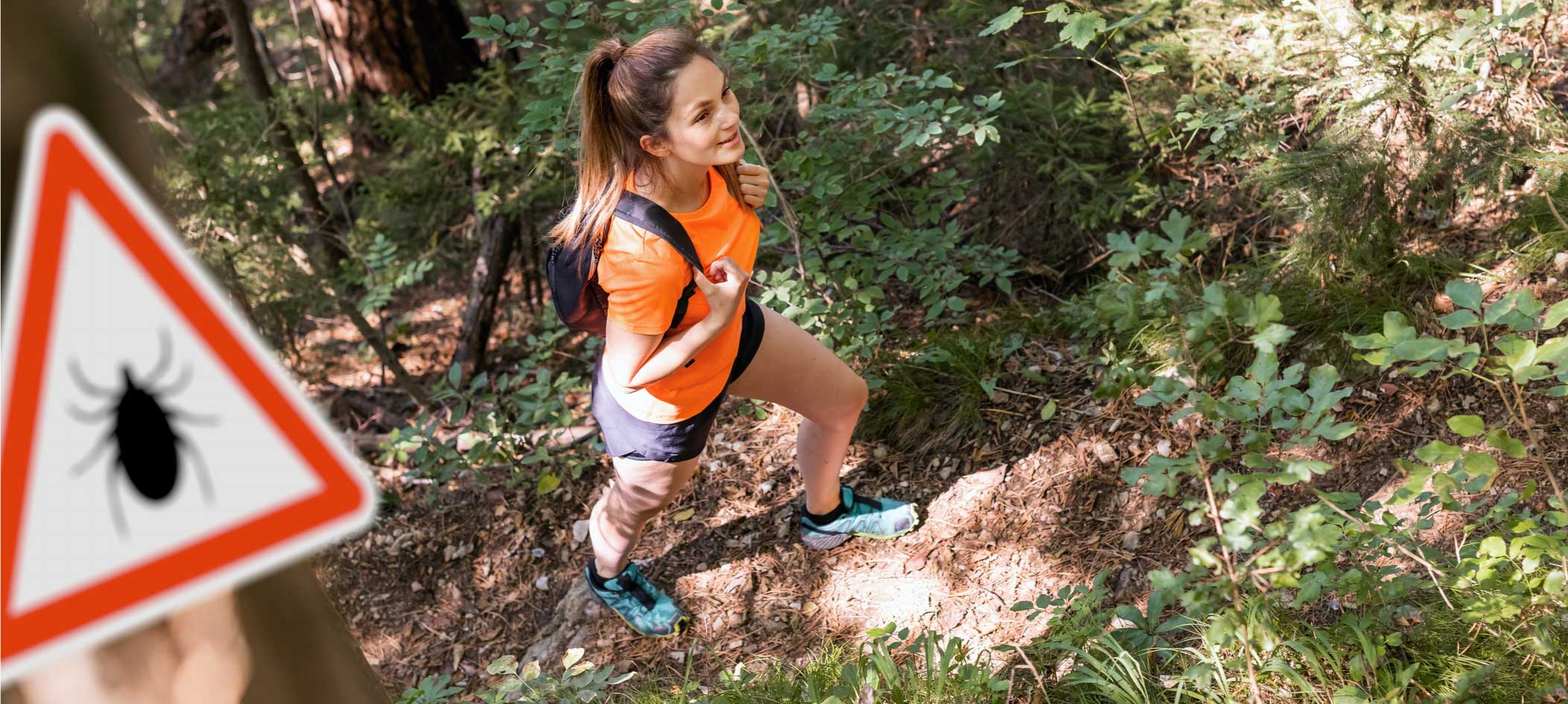
Beautiful weather has arrived, bringing with it sunshine, days spent outdoors... and ticks! Although there are nearly 900 species of tick worldwide, 12 have been identified in Quebec to date, ready to latch on to both humans and animals. Although they are often harmless, some tick species can transmit serious diseases, such as Lyme disease.
Itching to find out more? We've got all the info for you!
A tick is not an "insect". Rather, it belongs to the arachnid family, just like spiders and scorpions. That's actually what helps to identify them. Unlike insects, which have 6 legs, ticks have 8 legs (4 pairs), no wings, no antennae and a body divided into two parts - a small head and a larger abdomen.
Ticks are called "obligate" parasites because they depend on the blood of humans or animals to complete their developmental stages: egg, larva, nymph and adult. When the tick gorges itself on blood (and by gorge we mean that it can take 100 times its weight in blood!), it remains attached to its host and its abdomen swells and grows. That's why we sometimes mistake a tick for a wart in an animal's fur. But if you look closely, you'll see its little legs.
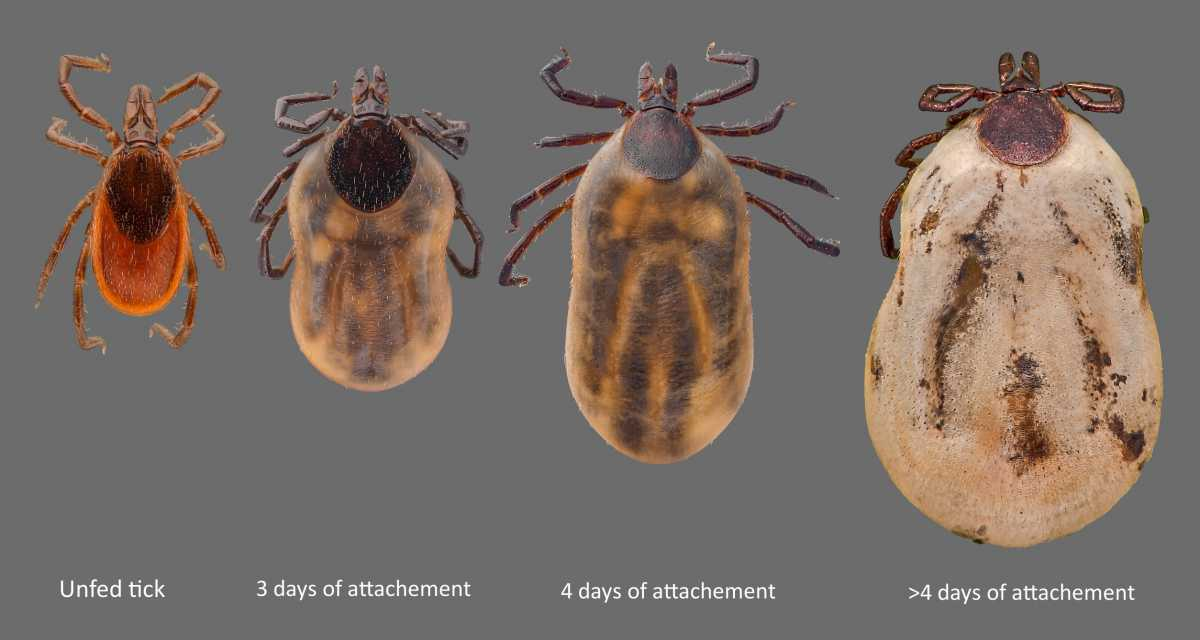
Source: INSPC - Levels of blood engorgement in adult female Ixodes scapularis (black-legged ticks).
5 interesting facts about ticks:
Although there are a dozen tick species in Quebec, the one that is of most concern is the blacklegged tick (Ixodes scapularis), also known as the deer tick. It is this species that can transmit Lyme disease to its hosts if it carries the Borrelia burgdorferi bacteria.
Lyme disease is a vector-borne disease and a zoonosis, meaning that it can affect both humans and animals. Tick bites (often in hard-to-see areas such as the groin, navel, armpits, bottom of the buttocks, behind the ears and scalp) are often painless and go unnoticed. Symptoms of Lyme disease vary considerably from one person to another and may appear within 3 to 30 days of the bite.
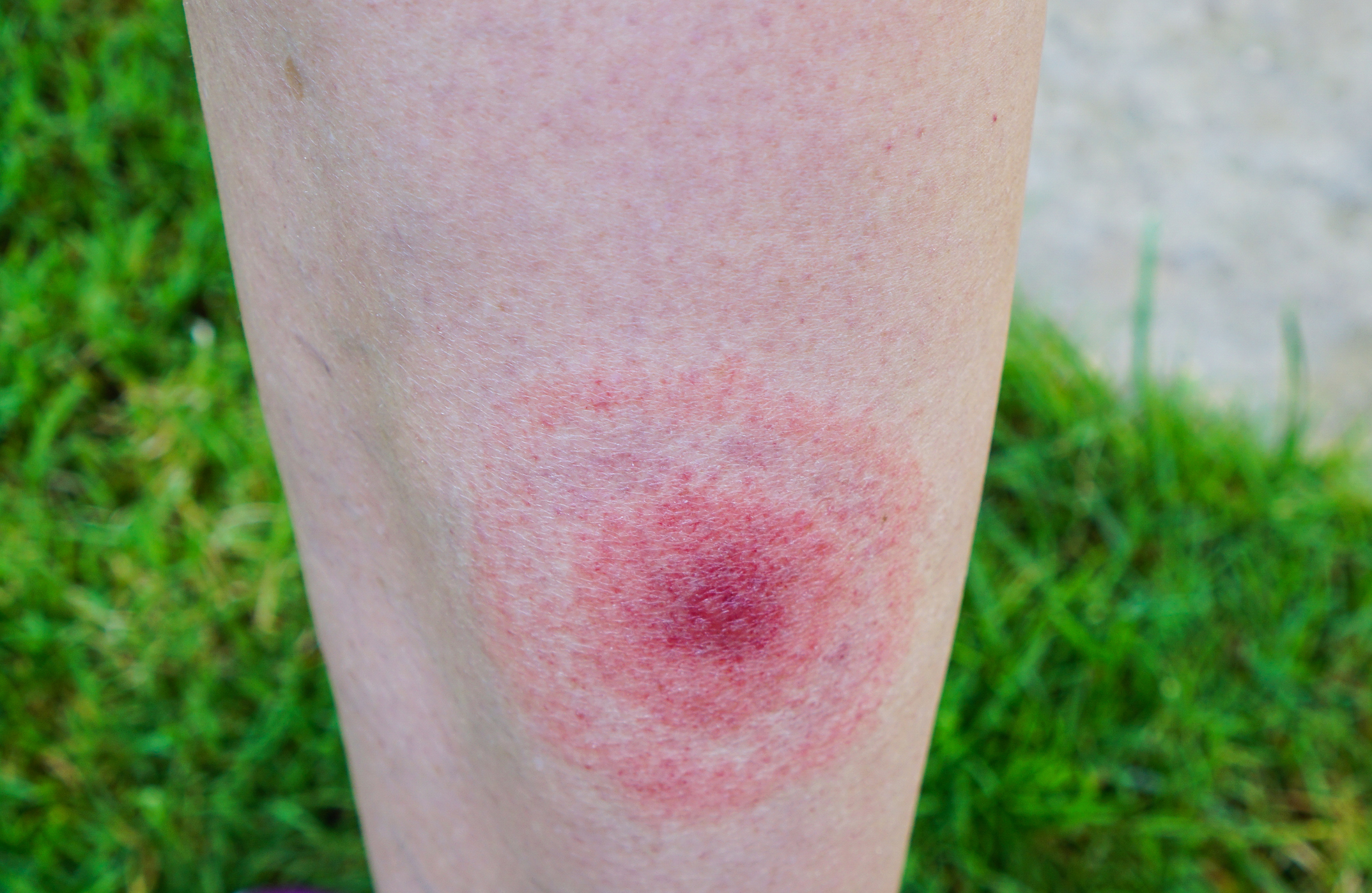
The current symptoms of Lyme disease include:
If Lyme disease is not diagnosed and treated in time, the bacteria can spread through the bloodstream and other symptoms can appear weeks or even months after the bite, including:
There is currently no vaccine available to protect humans against Lyme disease. However, it can be treated with antibiotics, but you must hurry! The sooner you receive treatment, the greater your chances of recovery. Having said that, some people who have received treatment for Lyme disease may continue to have symptoms afterwards, and those who have been diagnosed with Lyme disease in the past may be re-infected in the future.
If a rash occurs after you have been exposed to a tick, measure the diameter of the redness. You can also trace the outline of the rash with a pencil and take a photo to see if it gets any bigger.
See a health professional if:
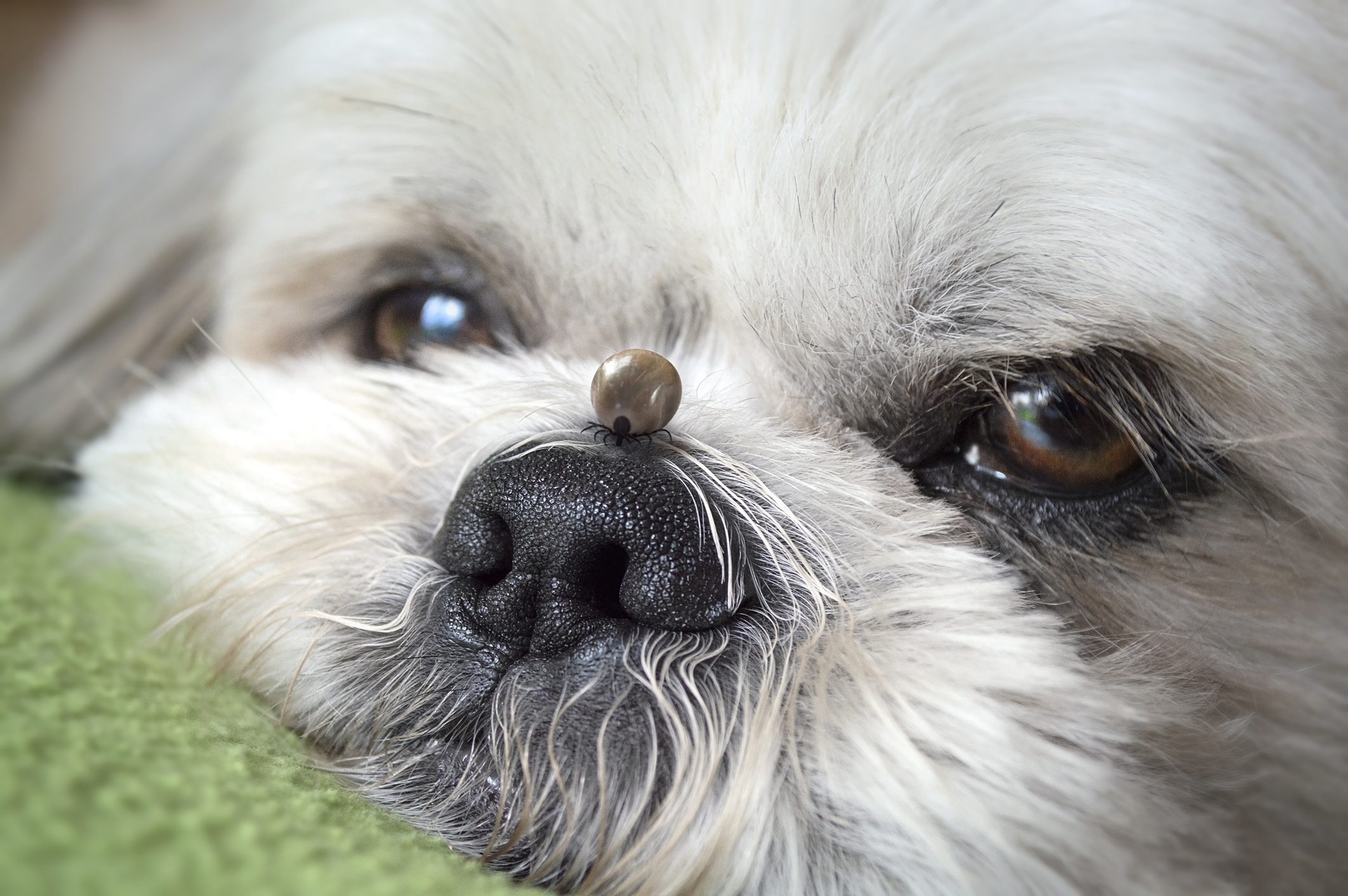
Your pets are not immune to Lyme disease. Although 95% of infected dogs will never develop Lyme disease, some may suffer symptoms, such as muscle pain, arthritis, fatigue and fever. It is extremely rare for cats to develop this disease.
Pets cannot transmit the disease directly to humans. However, if they bring ticks home, they can easily pass them on to you. So it's important to inspect your pets and quickly remove any ticks that have settled in their fur.
Unlike humans, there is a vaccine against Lyme disease, available only for dogs. To find out more, or if you think your pet has Lyme disease, contact your vet.
While out on a stroll in a wooded area:
Once you are back at home:
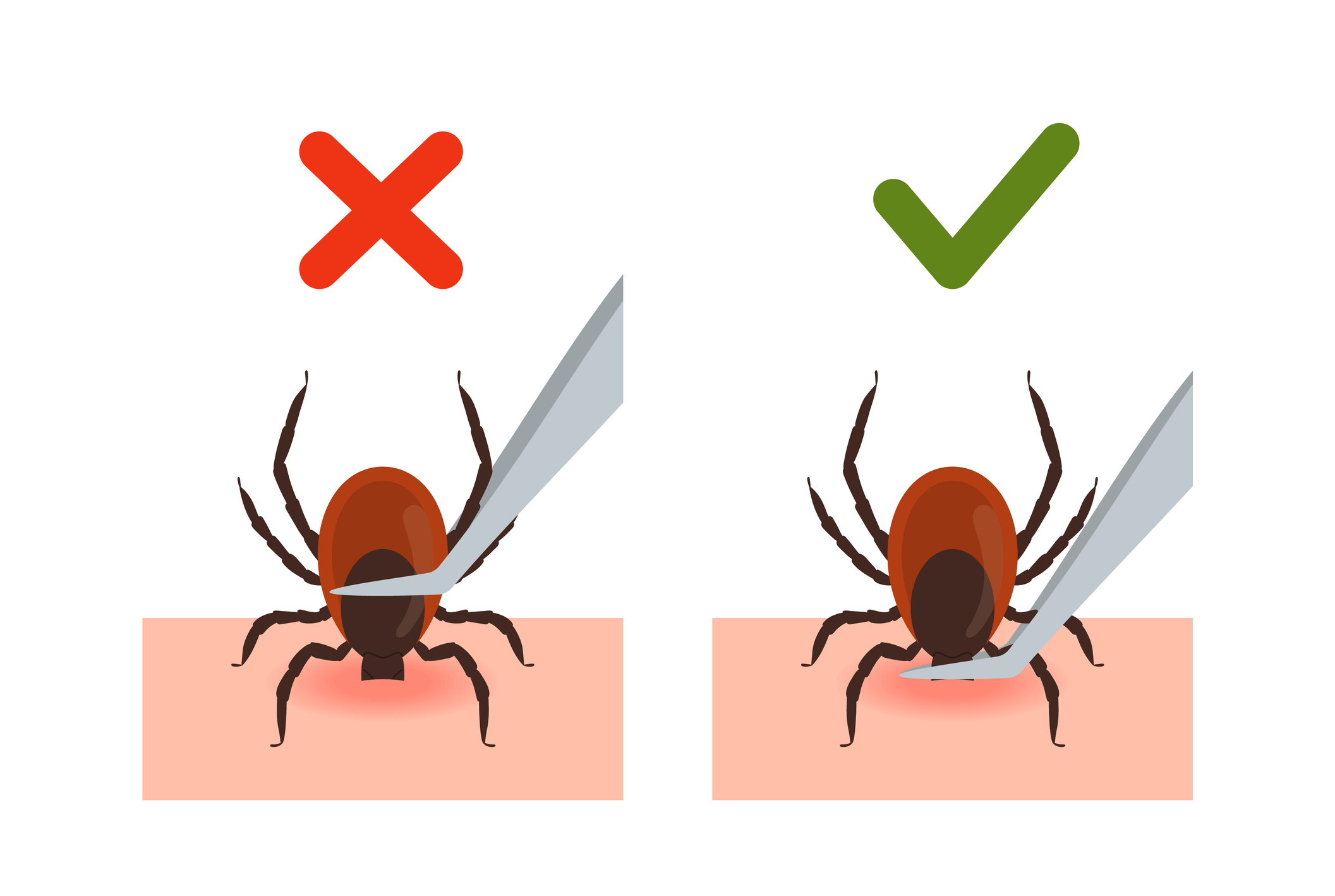
To reduce the risk of transmitting Lyme disease, you must remove a tick as soon as you find one on you or your pet.
It is recommended that you keep the tick in a well-sealed container for a few weeks. If you or your pet develop symptoms in the days or weeks that follow, it could be useful for the doctor or vet to have access to what bit you.
Do you have questions or worries about Lyme disease? Remember that with a Bonjour-santé membership, you have unlimited access to e-consults with our teams of nurses, who can give you advice and answer your questions.
